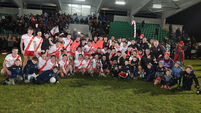Girls go for books while boys choose to go online
They are also more likely than girls to pick up a newspaper several times a month (almost three-in-four boys do), but more than two- thirds of girls and less than half of boys read magazines that regularly.
The internet is most popular among girls for chatting or exchanging emails, and they pick up and read magazines far more frequently than male readers.
In fact, boys are more likely to read news on the internet than pick up a factual book or comic, as the growth in home access to broad- band opens up a new realm of reading for Irish teenagers.
According to the Educational Research Centre (ERC) at St Patrick’s College in Dublin, there is a moderate to strong link between how much Irish teens enjoy reading and their performance in tests.
The ERC analysed their performance in the OECD’s 2009 reading test for the Programme for International Student Assessment (PISA), which was carried out in 65 countries early last year. Despite being above-average for developed nations in 2000, 2003 and 2006, the reading abilities of our 15-year-olds are now deemed only average.
These disappointing results are no better in maths, in which our teens scored significantly below average last year, raising questions about the curriculum and teaching standards at primary and second level.
Although reasonable questions have been raised about the true extent of the drop in our results, it is still worrying that Ireland is one of just four developed countries where standards dropped between 2003 and 2009.
While the proportion of newcomer children whose first language may not have been English increased almost threefold in that time and more weaker students are likely to be catered for now than a decade ago, these factors are unlikely to account for the entire drop — even though it is not matched by results of national literacy testing of fifth class pupils or standards in Junior Cert English.











